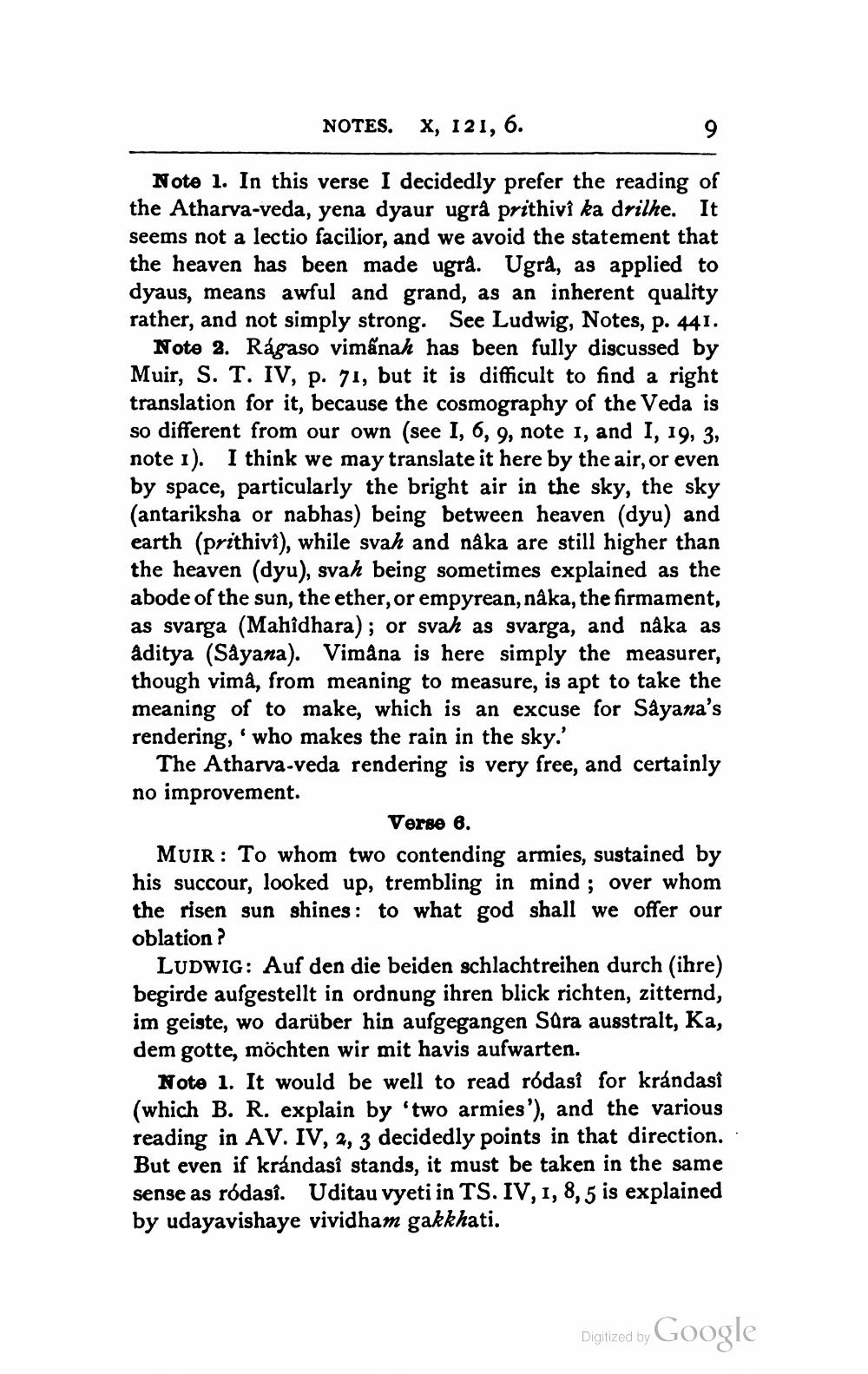________________
NOTES. x, 121, 6.
Note l. In this verse I decidedly prefer the reading of the Atharva-veda, yena dyaur ugrå prithivi ka drilhe. It seems not a lectio facilior, and we avoid the statement that the heaven has been made ugra. Ugra, as applied to dyaus, means awful and grand, as an inherent quality rather, and not simply strong. See Ludwig, Notes, p. 441.
Note 2. Rágaso vimânah has been fully discussed by Muir, S. T. IV, p. 71, but it is difficult to find a right translation for it, because the cosmography of the Veda is so different from our own (see I, 6, 9, note 1, and I, 19, 3, note 1). I think we may translate it here by the air, or even by space, particularly the bright air in the sky, the sky (antariksha or nabhas) being between heaven (dyu) and earth (prithivî), while svah and naka are still higher than the heaven (dyu), svah being sometimes explained as the abode of the sun, the ether, or empyrean, nâka, the firmament, as svarga (Mahidhara); or svah as svarga, and naka as aditya (Sayana). Vimana is here simply the measurer, though vima, from meaning to measure, is apt to take the meaning of to make, which is an excuse for Sayana's rendering, who makes the rain in the sky.'
The Atharva-veda rendering is very free, and certainly no improvement.
Verse 6. MUIR: To whom two contending armies, sustained by his succour, looked up, trembling in mind ; over whom the risen sun shines: to what god shall we offer our oblation?
LUDWIG: Auf den die beiden schlachtreihen durch ihre) begirde aufgestellt in ordnung ihren blick richten, zitternd, im geiste, wo darüber hin aufgegangen Sara ausstralt, Ka, dem gotte, möchten wir mit havis aufwarten.
Note 1. It would be well to read rodasî for krándasi (which B. R. explain by 'two armies'), and the various reading in AV. IV, 2, 3 decidedly points in that direction. But even if krándasî stands, it must be taken in the same sense as rodasi. Uditau vyeti in TS. IV, 1, 8,5 is explained by udayavishaye vividham gakkhati.
Digitized by Google




